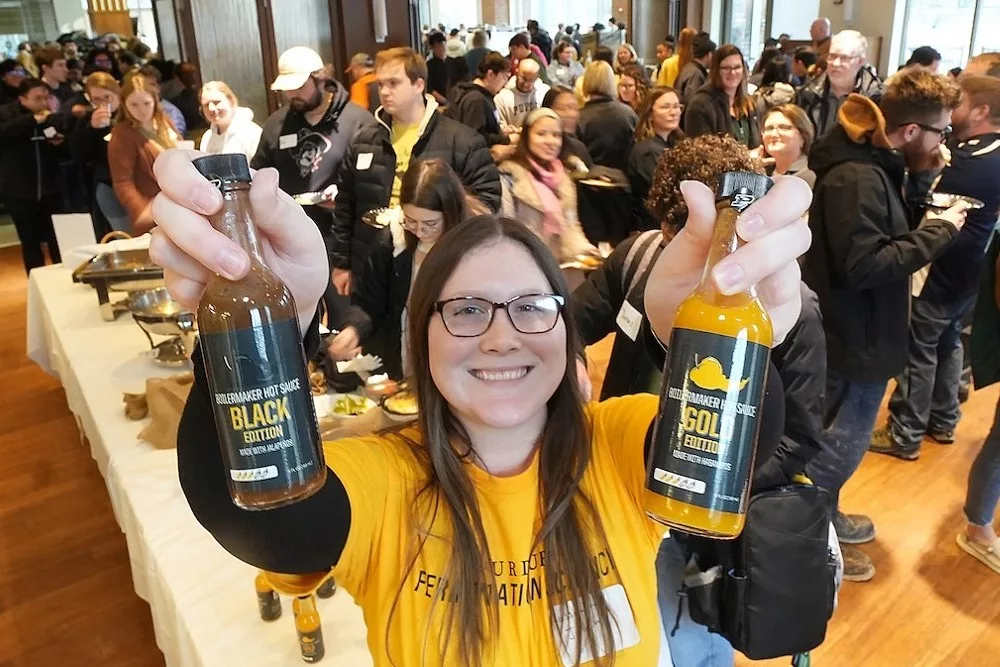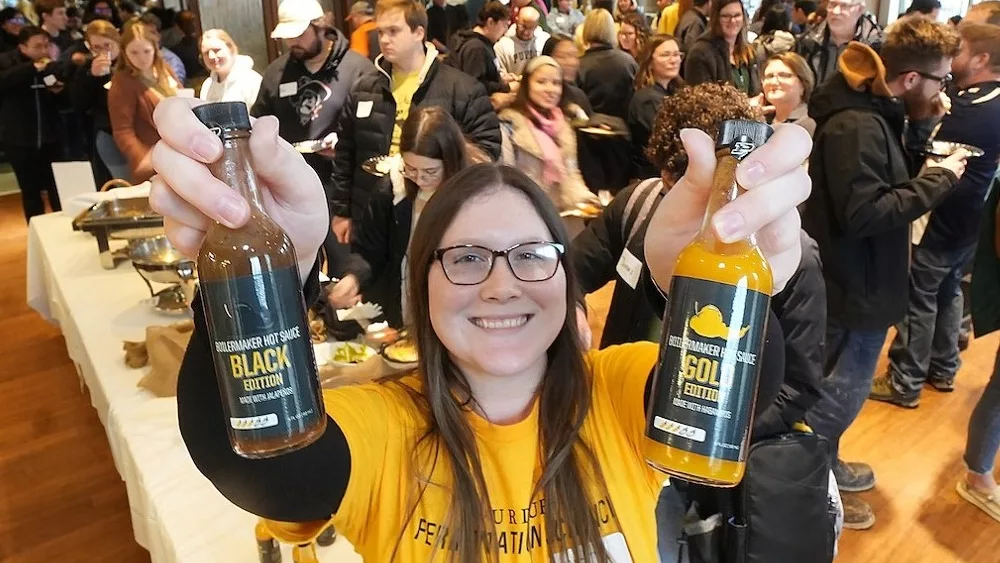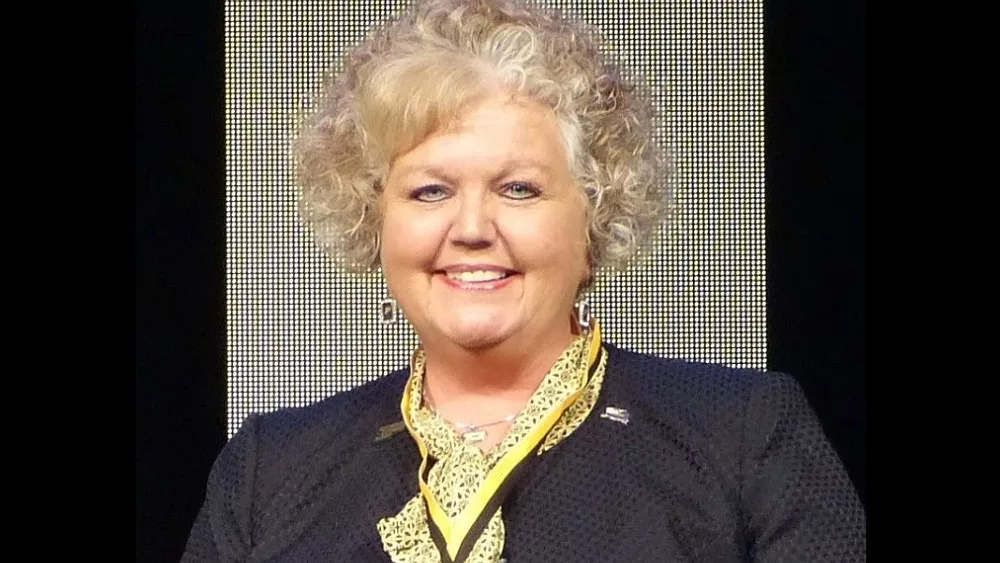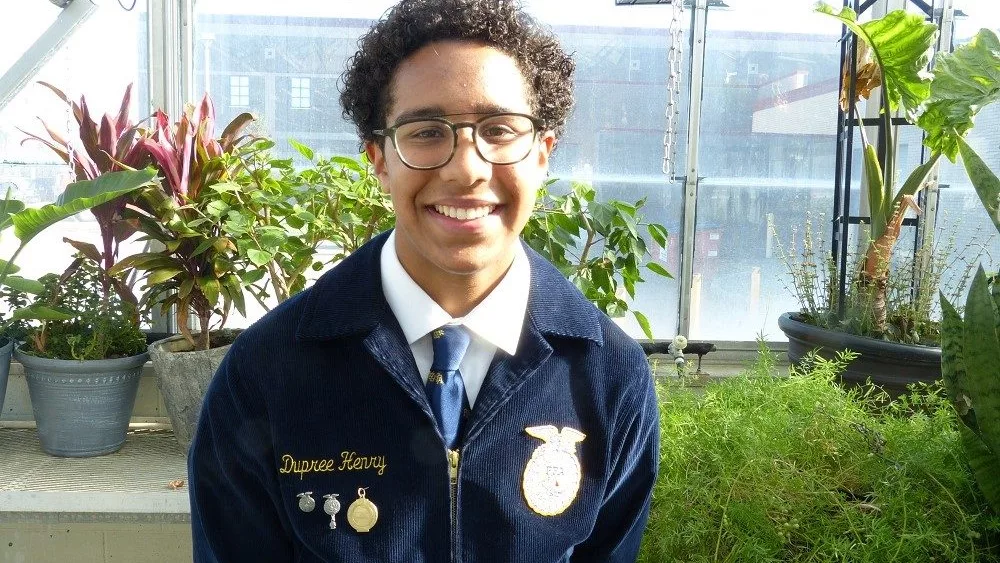From farm to fork—or, in this case, from farm to fans of the black and gold, it’s official: Purdue students are launching the first Purdue-brand hot sauce line.
“Boilermaker Hot Sauce Black Edition and Gold Edition” already hit tables during the Purdue Ag Alumni Fish Fry and will be available for the public to purchase at Purdue Spring Fest and the Boilermaker Butcher Block.
Locally sourced from the Purdue Student Farm and developed, produced and designed by students in an interdisciplinary food science and horticulture course—Sauces and Pickles Class (FS 491)—sauces are infused with Boilermaker spirit, giving them that special “kick.”
The course was led by professor of horticulture Steve Hallett, associate professor of produce food safety Amanda Deering, Student Farm manager Chris Adair, and Allie Kingery, research administrator for the Food Entrepreneurship and Manufacturing Institute. The Purdue Student Farm, a small, sustainable farm just off campus managed by the Department of Horticulture and Landscape Architecture, provided ingredients grown by Purdue students. Deering, Adair and Petrus Langenhoven, horticulture and hydroponics crop specialist, gave students a tour of the three-and-a-half-acre farm and a crash course in pepper varieties.
Under high tunnels that protect the peppers from rain and disease, possibilities grew. What might you do to create your own trademarked sauce? Breed your own pepper variety, or create a unique recipe? What makes some peppers sweet and some spicy? The answer: capsicum, an ingredient in peppers that caused the burn students felt when it was time to taste test, straight off the vine.
True to the collaborative nature of the project, student farm workers harvested the peppers, which were delivered to Food Science’s Skidmore Lab. The product development lab, led by Kingery, provides a space for students to learn in an industrial kitchen comparable to leading food manufacturers.
“We’ve been thinking for a long time how to leverage a relationship between the student farm and food science, and this is probably the first time we’ve done a holistic project together, with students working all the way through the process in one semester,” said Allie Kingery, research administrator for the Food Entrepreneurship and Manufacturing Institute.

Students split into two groups: black and gold, each tasked with concocting a sauce to match their respective colors using natural pigments found in the produce. Four recipes, 27 variations, 27 canning jars to fill and two and a half hours of class time. The pressure was on.
What ensued next was colorful chaos. From poblanos to dried cayenne, Adair explained each strain as students scrambled to find the most vibrant dark green and gold peppers, debating base ingredients, add-ins like berry extracts or garlic, spice levels and flavor combinations. Kingery and Deering began chopping.
Although students researched existing hot sauce ingredient pairings, Bailey Williams, a member of the Boilermaker Gold team, explained that much of the recipe creation process was based on personal experiences with different cuisines – and a bit of guesswork.
“The goal of today is quantity over quality. We know a few won’t turn out, so we’ll measure and record everything very carefully so that we can recreate the good ones,” said Bailey Williams, Food Science, Boilermaker Gold team.
There was indeed a scientific method to the madness. Each recipe had variations based on four variables: blended versus chopped produce, ingredient ratios, length of fermentation and roasted versus fresh ingredients. Students weighed ingredients for precise measurements before sealing them in the canning jars while Hallett meticulously recorded each variation.
Brine was added to each canning jar with a sealed lid that slowly lets air escape over the next few weeks. At room temperature, this allows a natural fermentation process to take hold. The brine and fermentation process lowers the pH level below 4.6, a highly acidic environment in which bad bacteria is unable to survive. Good bacteria thrive, developing and deepening flavors while ensuring the sauce is safe to eat.

Story by Kate Jacobson, Photography by Tom Campbell and Jessica Kerkhoff, and video by Kelsey Getzin.





